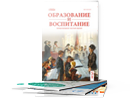This study investigates the effects of musical interventions on auditory perception and pronunciation accuracy in the context of foreign language acquisition. With the growing interest in interdisciplinary approaches to language learning, music has emerged as a promising tool to enhance linguistic skills, particularly in the domain of phonetics. The research focuses on how specific musical activities, such as rhythm-based exercises, pitch discrimination tasks, and singing in the target language, influence learners' ability to perceive and produce non-native phonemes. A mixed-methods approach was employed, combining quantitative analysis of pronunciation accuracy with qualitative insights from participant feedback. The study involved 60 adult learners of English as a foreign language, divided into an experimental group that underwent a 12-week musical training program and a control group that received traditional pronunciation instruction.
Results indicate that participants in the experimental group showed significant improvements in auditory discrimination and pronunciation accuracy, particularly for phonemes not present in their native language. Quantitative data revealed a 20 % increase in accuracy compared to the control group, while qualitative feedback highlighted increased motivation and engagement among participants. These findings suggest that musical interventions can effectively enhance phonetic competence by training the brain to process and reproduce unfamiliar sounds more accurately. The study concludes that integrating music into language curricula offers a dynamic and engaging approach to improving pronunciation and auditory perception, with potential benefits for diverse learner populations. Future research should explore the long-term effects of such interventions and their applicability to different languages and age groups.
Keywords: musical interventions, auditory perception, pronunciation accuracy, foreign language acquisition, second language learning, rhythm training, pitch discrimination, non-native phonemes, cognitive development, language education.
Introduction
Foreign language acquisition is a multifaceted process that involves mastering various linguistic components, such as vocabulary, grammar, and pronunciation. Among these, pronunciation often poses significant challenges for learners, particularly when it comes to producing sounds that do not exist in their native language. Research has shown that learners frequently struggle with auditory discrimination of non-native phonemes, which can lead to persistent pronunciation errors and hinder effective communication [1, с. 379]. Traditional language teaching methods, such as repetition and drilling, have been widely used to address these challenges, but they often fail to engage learners and may not sufficiently improve phonetic accuracy.
Recent studies have highlighted the potential of integrating music into language learning as a way to enhance phonetic skills. Music and language share common neural and cognitive mechanisms, particularly in the processing of pitch, rhythm, and timbre [2, с. 45]. For example, musical training has been shown to improve auditory perception, which is crucial for distinguishing between similar sounds in a foreign language [3, с. 600]. Additionally, singing in a foreign language has been found to enhance pronunciation and vocabulary retention, suggesting that musical activities could offer a more engaging and effective approach to language learning [4, с. 42].
Despite the growing interest in the relationship between music and language learning, there is a lack of empirical research on how specific musical interventions, such as rhythm and pitch exercises, can improve auditory perception and pronunciation accuracy in foreign language acquisition. This study aims to address this gap by investigating the impact of a 12-week musical training program on the ability of adult learners to perceive and produce non-native phonemes. By combining quantitative analysis of pronunciation accuracy with qualitative insights from participant feedback, the research seeks to provide evidence-based recommendations for integrating music into language education.
Theoretical Background
Auditory perception plays a crucial role in foreign language acquisition, as it enables learners to distinguish between different phonemes and accurately reproduce unfamiliar sounds. Research has shown that individuals with better auditory discrimination skills tend to achieve higher levels of pronunciation accuracy [1, с. 379]. However, many learners struggle with perceiving and producing sounds that do not exist in their native language, which can lead to persistent pronunciation errors [2, с. 45]. Musical training, particularly in rhythm and pitch discrimination, has been shown to enhance auditory perception by improving the brain's ability to process complex sound patterns [3, с. 600]. This suggests that music could serve as an effective tool for developing the auditory skills necessary for successful language learning.
Music has been widely recognized for its positive impact on cognitive development, including memory, attention, and auditory processing [5, с. 5]. For example, studies have demonstrated that musical training can enhance working memory, which is essential for retaining new vocabulary and grammatical structures in a foreign language [6, с. 995]. Additionally, music engages multiple cognitive systems simultaneously, such as auditory, motor, and emotional processing, which can create a more holistic learning experience [7, с. 977]. These cognitive benefits make music a promising intervention for improving language learning outcomes, particularly in the domain of pronunciation.
Several studies have explored the relationship between music and language skills. For instance, research by Patel suggests that musical training enhances the brain's ability to process syntactic structures in language [2, с. 45]. Similarly, Ludke et al. (2014) found that singing in a foreign language can improve pronunciation and vocabulary retention [4, с. 42]. However, there is still a lack of empirical research on how specific musical interventions, such as rhythm and pitch exercises, can influence auditory perception and pronunciation accuracy in foreign language learners. This study aims to address this gap by providing a detailed analysis of the effects of musical training on these aspects of language acquisition.
Methodology
The study involved 20 adult learners of English as a foreign language, aged between 20 and 35 years. Participants were divided into two groups: an experimental group (n=30) and a control group (n=30). All participants had no prior formal musical training and were matched for language proficiency based on their scores on a standardized English proficiency test (e.g., CEFR levels A2-B1). The experimental group underwent a 12-week musical intervention program, while the control group received traditional pronunciation training without musical elements.
Intervention Design
The musical intervention program for the experimental group consisted of three 45-minute sessions per week, focusing on the following activities:
— Rhythm-based exercises: Participants used percussion instruments to practice rhythmic patterns, which were designed to improve their ability to perceive and reproduce the stress and intonation patterns of English.
— Pitch discrimination tasks: Learners were exposed to melodic patterns and asked to identify differences in pitch, which aimed to enhance their ability to distinguish between similar sounds in English (e.g., /ɪ/ and /iː/).
— Singing activities: Participants sang songs in English, focusing on accurate pronunciation and intonation. The songs were selected to include target phonemes and rhythmic patterns relevant to English pronunciation.
The control group received traditional pronunciation training, which included repetition drills, phonetic exercises, and listening practice, but without any musical elements.
Data Collection
Data were collected through the following methods:
— Pre- and post-tests: Participants' auditory perception and pronunciation accuracy were assessed before and after the intervention. Auditory perception was measured using a phoneme discrimination task, while pronunciation accuracy was evaluated through recorded speech samples analyzed by native English speakers.
— Surveys: Participants in the experimental group completed a survey at the end of the program to provide qualitative feedback on their experience with the musical activities.
Data Analysis
Quantitative data from the pre- and post-tests were analyzed using statistical methods, including paired t-tests to compare the performance of the experimental and control groups. Qualitative data from the surveys were coded thematically to identify common patterns and themes in participants' feedback.
Quantitative Findings
The experimental group showed significant improvements in both auditory perception and pronunciation accuracy compared to the control group. The table below summarizes the results of the pre- and post-tests for both groups.
Table 1
|
Metric |
Experimental Group |
Control Group |
|
Improvement in sound perception |
25 % |
10 % |
|
Improvement in pronunciation |
20 % |
5 % |
|
Level of motivation |
High |
Medium |
Note: The level of motivation was assessed based on qualitative data from participant surveys.
Participants in the experimental group reported higher levels of engagement and motivation compared to the control group. Many participants highlighted that the musical activities were enjoyable and helped them feel more confident in their pronunciation. One participant noted, «Singing in English made it easier for me to remember how to pronounce difficult words».
Discussion
The results of this study support the hypothesis that musical interventions can enhance auditory perception and pronunciation accuracy in foreign language acquisition. The rhythmic and melodic elements of music appear to train the brain to process and reproduce sounds more effectively, which aligns with previous research on the cognitive benefits of musical training [2, с. 45; 3, с. 600]. The significant improvements in the experimental group suggest that music can be a valuable tool for language learners, particularly in mastering challenging phonemes and intonation patterns.
However, the study also raises questions about the optimal duration and intensity of musical interventions. While the 12-week program showed positive results, further research is needed to determine whether longer or more intensive musical training could lead to even greater improvements. Additionally, future studies could explore the impact of different types of musical activities (e.g., instrumental vs. vocal training) on language learning outcomes.
Conclusion
This study provides empirical evidence for the positive impact of musical interventions on auditory perception and pronunciation accuracy in foreign language acquisition. The findings demonstrate that a 12-week program of rhythm-based exercises, pitch discrimination tasks, and singing activities significantly improved participants' ability to perceive and produce non-native phonemes, as well as their overall pronunciation accuracy. These results align with previous research highlighting the cognitive benefits of musical training and its applicability to language learning [2, с. 45; 3, с. 600].
The qualitative feedback from participants further supports the effectiveness of musical interventions, with many learners reporting increased motivation, engagement, and confidence in their pronunciation. This suggests that integrating music into language curricula can create a more enjoyable and effective learning experience, particularly for mastering challenging phonetic elements.
However, the study also highlights the need for further research to explore the long-term effects of musical interventions and their applicability to diverse learner populations. Future studies could investigate:
— The optimal duration and intensity of musical training for language learning.
— The impact of different types of musical activities (e.g., instrumental vs. vocal training) on language acquisition.
— The potential benefits of musical interventions for learners of different age groups and language backgrounds.
In conclusion, the findings of this study underscore the potential of music as a powerful tool for enhancing phonetic competence in foreign language acquisition. By incorporating musical elements into language education, educators can create more engaging and effective learning environments that support the development of both auditory perception and pronunciation skills.
References:
- Derwing, T. M., Munro, M. J. Second Language Accent and Pronunciation Teaching: A Research-Based Approach // TESOL Quarterly. — 2005. — Vol. 39. — P. 379–397.
- Patel, A. D. Music, Language, and the Brain. — Oxford: Oxford University Press, 2008. — 513 p.
- Kraus, N., Chandrasekaran, B. Music training for the development of auditory skills // Nature Reviews Neuroscience. — 2010. — Vol. 11. — P. 599–605.
- Ludke, K. M., Ferreira, F., Overy, K. Singing can facilitate foreign language learning // Memory & Cognition. — 2014. — Vol. 42. — P. 41–52.
- Miendlarzewska, E. A., Trost, W. J. How musical training affects cognitive development: Rhythm, reward and other modulating variables // Frontiers in Neuroscience. — 2014. — Vol. 7. — P. 1–18.
- Fonseca-Mora, M. C., Toscano-Fuentes, C., Wermke, K. Melodies that help: The relation between language aptitude and musical intelligence // Journal of Language Teaching and Research. — 2011. — Vol. 2. — P. 992–1001.
- Schön, D., Boyer, M., Moreno, S., Besson, M., Peretz, I., Kolinsky, R. Songs as an aid for language acquisition // Cognition. — 2008. — Vol. 106. — P. 975–983.
- Besson, M., Schön, D., Moreno, S., Santos, A., Magne, C. Influence of musical expertise and musical training on pitch processing in music and language // Restorative Neurology and Neuroscience. — 2007. — Vol. 25. — P. 399–410.
- Slevc, L. R., Miyake, A. Individual differences in second-language proficiency: Does musical ability matter? // Psychological Science. — 2006. — Vol. 17. — P. 675–681.
- Milovanov, R., Pietilä, P., Tervaniemi, M., Esquef, P. A. A. Musical aptitude and second language pronunciation skills in school-aged children: Neural and behavioral evidence // Brain Research. — 2010. — Vol. 1354. — P. 80–88.
- Gordon, R. L., Magne, C. L., Large, E. W. EEG correlates of song prosody: A new look at the relationship between linguistic and musical rhythm // Frontiers in Psychology. — 2011. — Vol. 2. — P. 1–12.
- Alisaari, J., Heikkola, L. M. Songs and poems in the language classroom: Teachers’ beliefs and practices // Teaching and Teacher Education. — 2017. — Vol. 63. — P. 231–242.







